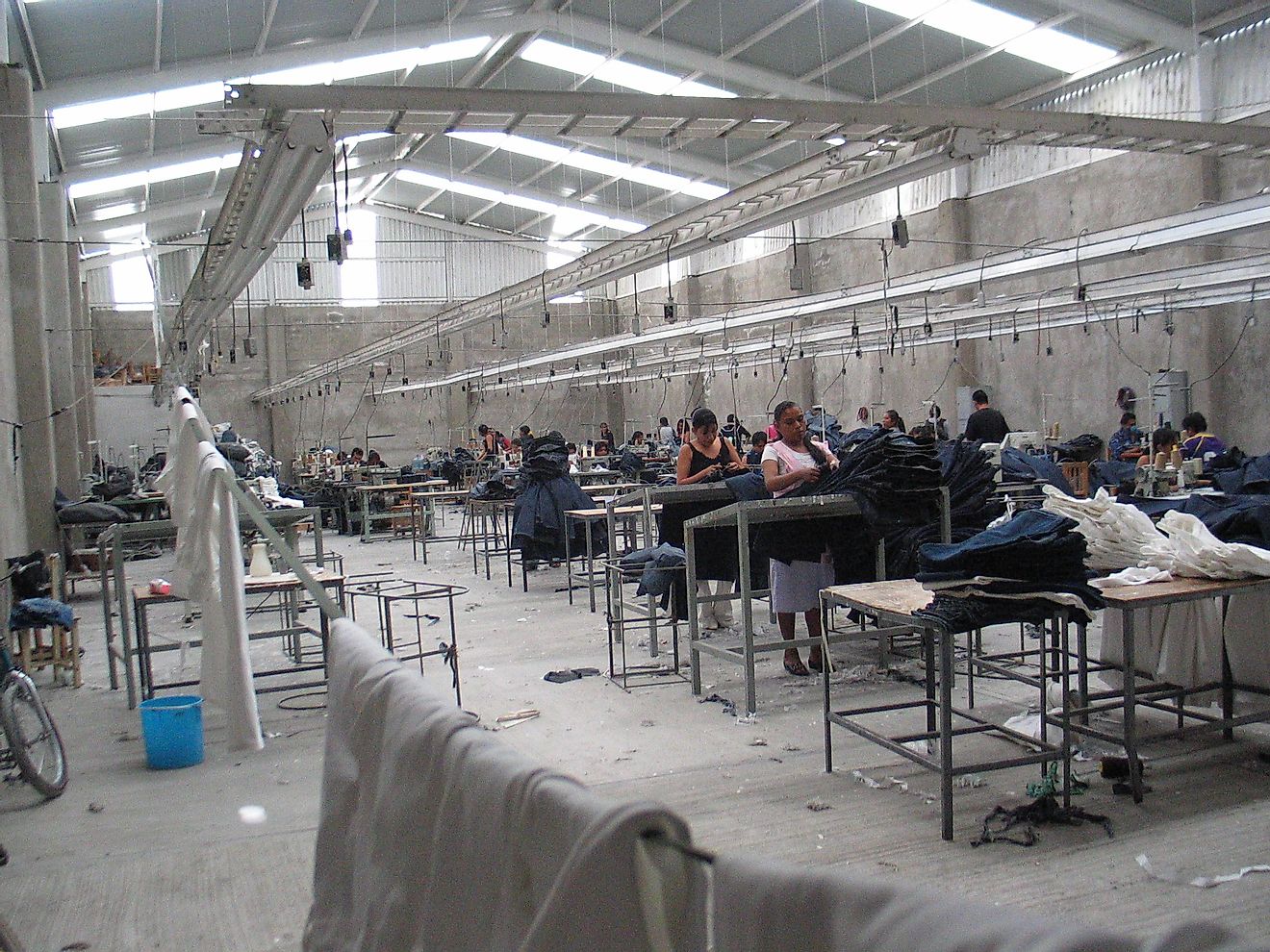What is a Maquiladora?

Maquiladoras are assembly plants, mainly in northern Mexico, that employ low-skilled workers at very low hourly rates. The sole reason that these companies are located in Mexico is to take advantage of the cheap labor as the businesses neither buy the assembled parts nor sell the finished product in Mexico. These manufacturing facilities export the majority of their products (over 80%) to the US. Maquiladoras are responsible for the export growth that Mexico has seen over the past three decades. In fact, they represent nearly half of Mexico’s exports.
4. History and Development
The maquiladora saw its start after the end of the Bracero Program in 1964, a farm labor agreement between the US and Mexico. The Bracero Program allowed for the allotment of seasonal agricultural work to Mexican laborers. In response to its termination, the Mexican government initiated the Border Industrialization Program (BIP), also known as the Maquiladora Program, to attract foreign investment and ease increased unemployment in the area. After NAFTA’s implementation, maquiladoras increased employment by 86%. Investors created demand for more than 1,400 additional plants and today these factories can also be found in central Mexico although some sources claim that investments have decreased by 8.2% since 2002.
3. Cost-Cutting Processes
These manufacturing and assembly factories allow foreign companies to cut costs in various ways. The first is the cost of labor; Mexico has a lower minimum wage than countries such as China that might have otherwise competed. The second cost-cutting maneuver is in the supply chain. Maquiladoras are located right on the border with the US for the most part and as such offer investors reduced transportation costs.
2. Human Rights Criticisms
The human rights criticisms surrounding Mexican maquiladoras are many. Employers pay workers between 50 cents and three dollars per hour. Hiring managers give preference to younger women workers since they are willing to work for less and can work longer hours than older women, but these preferences do not come without a price. Often, the company requires pregnancy testing before offering employment; many women are subject to testing while employed, and if found pregnant, they consequently lose their jobs. The working conditions aren’t much better. A normal working shift is at least 12 hours, and workers face health risks from dangerous machinery and unidentified chemicals. Simply trying to organize into unions puts employees at risk of losing their job.
1. Environmental Threats and Regulations
Not only do employees suffer as a result of company cost-cutting strategies but so too does the environment. Government and foreign investors alike tend to ignore local environmental regulations and policies although it is important to note that some maquiladoras abide by international standards that are higher than what the Mexican government demands. Perhaps the biggest public health and environmental threat caused by these factories come from the issue of hazardous waste storage. Improper waste storage and handling are some of the reasons that the border region is one of the most polluted in Mexico. Another factor that contributes to the pollution does not come from the maquiladora directly but rather from the people who work there. These individuals come from central and southern Mexico to work in the factories and because of the low-wages, they cannot afford to live in nearby cities. As a result, they are forced to live in neighborhoods without electricity and proper sewage facilities which contribute to the waste that runs off into the river. These manufacturing facilities also significantly contribute to air pollution by emitting untold amounts of carbon monoxide and particulates. Both water and airways are polluted above the normal safety standards in and around the major maquiladora cities.











